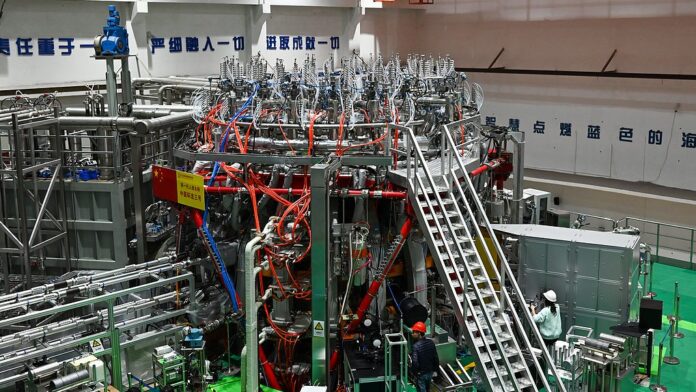BEIJING: China’s new-generation “artificial sun” Huanliu-3 (HL-3) tokamak has launched a new round of physical experiments, incorporating for the first time a digital twin system independently developed by the China National Nuclear Corporation (CNNC), the CNNC said on Monday.
HL-3, a magnetic confinement nuclear fusion facility independently designed and developed by China, is the country’s largest and most advanced fusion device designed for the research and development of controlled nuclear fusion technology.
A key part of HL-3’s operation is the vacuum chamber baking process. The newly implemented digital twin system functions as a “super eye” during the process by creating a fully virtual replica of the physical components to provide real-time, highly accurate monitoring of the process.
The latest round of experiments will focus on improving the overall operational capability of HL-3, and the vacuum chamber baking process is of great significance in providing high-quality plasma operating vacuum environment.
By constructing an accurate digital model, the digital twin system enables real-time synchronous calculations and monitoring of the vacuum chamber’s state, significantly enhancing control and responsiveness throughout the process.
The application of the digital twin system marks a significant progress in the core digital technologies of HL-3, which ensures the facility’s safe and stable operation. It also lays a foundation for the development of fully integrated, intelligent control, which could have broad application prospects, according to the CNNC.
The CNNC researchers will continue exploring the potential of digital twin technology within nuclear fusion research, further advancing HL-3’s capabilities and contributing to the application of nuclear fusion energy.
China’s HL-3 opened to international collaboration late last year. During its first round of global joint experiments this year, the facility attracted 17 leading research institutes and universities from countries including France and Japan. Notably, it discovered and realized a new, advanced magnetic field structure for the first time in the world.





















